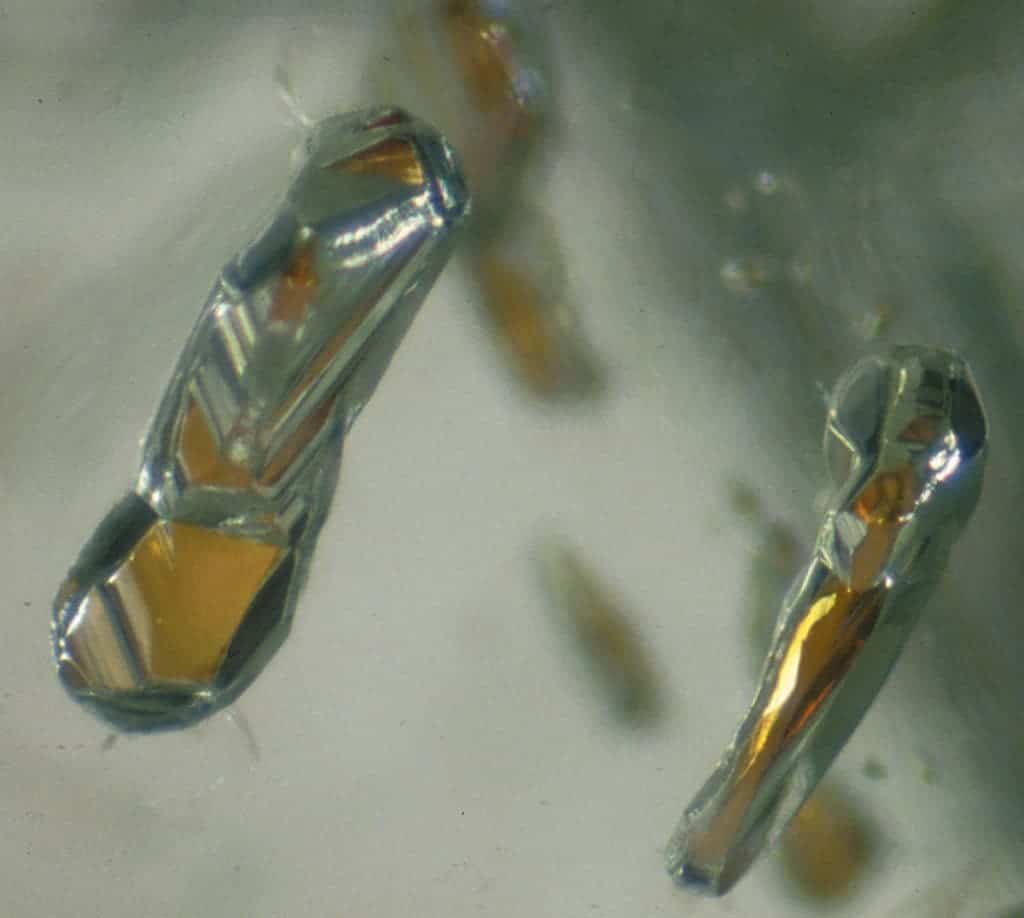Researchers drilling into the Earth’s mantle have made an unexpected finding: analyzing rocks which came from 550 km below the surface, they discovered highly oxidized iron, similar to the rust we see on our planet’s surface.

Diamonds with garnet inclusions can form at depths down to 550 kilometers below the surface. Image credits: Jeff W. Harris, University of Glasgow.
If there’s something you don’t expect to find kilometers beneath the surface, it’s rust. The oxidized iron was found as inclusions in diamonds and garnets coming from the deep mantle. Of course, researchers didn’t drill 550 km (the deepest borehole “only” went 12 km deep) but reaching the top of the mantle enables geoscientists to analyze rock samples that migrated from deeper parts.
It’s quite a unique opportunity, as geoscientists don’t know that much about how oxidation happens in the deep Earth — actually, they weren’t even sure whether it takes place at those depths in the first place.
“On Earth’s surface, where oxygen is plentiful, iron will oxidize to rust,” explained Thomas Stachel, professor in the Department of Earth and Atmospheric Sciences at the University of Alberta, who co-authored the study. “In the Earth’s deep mantle, we should find iron in its less oxidized form, known as ferrous iron, or in its metal form. But what we found was the exact opposite–the deeper we go, the more oxidized iron we found.”

Most of us are familiar with oxidized iron through a process we commonly see on the surface: rust. Image via Pixabay.
The discovery suggests that some oxidation does happen, even at those ungodly depths. Researchers believe the main culprit is molten carbonate, which was carried in sinking slabs of ancient seafloor. However, it’s hard to explain exactly how oxidation happened there in the first place. It’s counterintuitive and hard to explain why the deeper they went, the more oxidized iron they found. Nevertheless, it raises some intriguing possibilities.
“It’s exciting to find evidence of such profound oxidation taking place deep inside the Earth,” said Stachel, Canada Research Chair in diamonds.
Unfortunately, this study raises more questions than it answers. We know a lot about the carbon cycle on the Earth’s surface, but what happens in the mantle? This study seems to indicate that carbon can go down as far as 550 kilometers below the surface, where it interacts with the rocks and crystallizes as diamonds. But diamonds can migrate even deeper in the mantle. Does this mean, that the carbon cycle too extends this low? The study seems to suggest it, but if this is the case, then where does the oxygen come from, and how is the process different from what happens at the surface? Those are all questions to be answered by future research.
The study “Oxidized iron in garnets from the mantle transition zone,” was published in Nature Geoscience (doi: 10.1038/s41561-017-0055-7).









